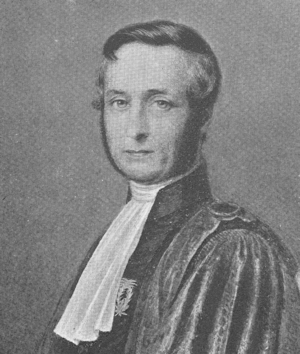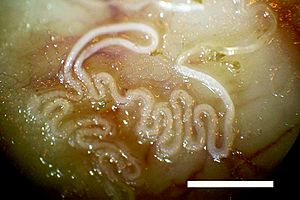Félix Dujardin facts for kids
Quick facts for kids
Félix Dujardin
|
|
|---|---|

Painting by his daughter, 1847
|
|
| Born | 5 April 1801 Tours, France
|
| Died | 8 April 1860 (aged 59) Rennes, France
|
| Known for | protozoans, helminths |
| Scientific career | |
| Fields | Biology, Parasitology |
| Institutions | University of Rennes, France |
| Author abbrev. (botany) | Dujard. |
| Signature | |
Félix Dujardin (born April 5, 1801 – died April 8, 1860) was a French scientist. He was a biologist who studied tiny living things. He is famous for his work on protozoans and other small animals without backbones, called invertebrates. He was born in Tours, France.
Contents
About Félix Dujardin

Félix Dujardin was mostly self-taught. This means he learned a lot on his own, without going to many formal classes. His father was a watchmaker.
In 1840, he became a professor at the University of Toulouse. He taught about rocks and minerals, which is called geology and mineralogy. The next year, he taught about animals (zoology) and plants (botany) at Rennes.
Discoveries About Microscopic Life
Dujardin spent a lot of time studying very small animals. He used a microscope to see them. In 1834, he suggested a new group of tiny, one-celled organisms. He called them Rhizopoda.
At that time, some scientists thought these tiny organisms were like smaller versions of bigger animals. But Dujardin disagreed. He showed that these tiny creatures had special parts unique to single-celled life. For example, he studied tiny sea creatures called foraminifera. People thought they were a type of mollusk, but Dujardin proved they were not.
He also studied many other small animals without backbones. These included echinoderms (like starfish), insects, helminths (worms), and cnidarians (like jellyfish).
What is Sarcode?
While studying foraminifera, Dujardin noticed a jelly-like substance inside them. It seemed to have no clear shape. He called this substance "sarcode." Later, another scientist named Hugo von Mohl renamed it protoplasm. This is the living material inside cells.
Dujardin's Work on Brains
Félix Dujardin is also known for a big discovery he made in 1850. He was the first to describe special parts in the brains of insects. These parts are called "mushroom bodies." He found them in the brains of bees, bumblebees, ants, and fruit flies.
Dujardin believed that these mushroom bodies were where intelligence came from. Today, scientists know he was almost right! These structures are now known to be important for memory and many other behaviors in insects and other invertebrates.
See also
 In Spanish: Félix Dujardin para niños
In Spanish: Félix Dujardin para niños

